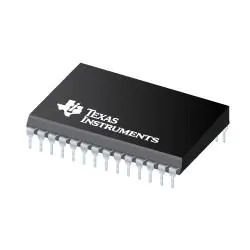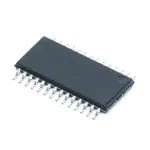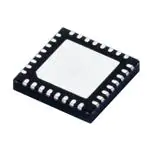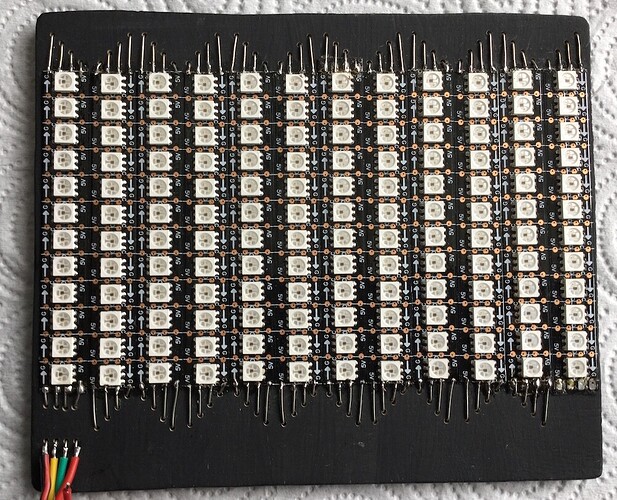Amazonasmann:
However this TLC5940NT seems to be rather expensive on the usual websites like amazon etc...because it seems to be obsolete. On several electronics website I always find the TLC5940PWPR or TLC5940QRHBREP first which costs like 2€ a piece.
As is often the case, in this Hobbyist Unfriendly world of electronics, the "NT" version of this IC is the "Through Hole" or "DIP" package. And the DIP version was obsoleted, since the DIP package is not used in "the industry" so much anymore--since manufacturers prefer what is called "SMD" or "Surface Mount".
Here's what a DIP [or PDIP] "through hole" package looks like:

And here's a HTSSOP [also known as simply the SSOP] surface mount package:

Note: There is a subtle difference between the two, above, packages, that might not be readily apparent. The DIP package has pins that point down, whereas the SSOP package as pins that point out.
And here's a quite different kind of surface mount package [there are hundreds!] called a VQFN:

BTW: There is "Package" [also called "Case"], and then there is "Packaging", which is an entirely different thing. The Package [or Case] is what the "chip" [the piece of silicon that provides the functionality] is housed in. The packaging is how all the little packages are delivered -- which can be in a tube, or in something called "tape", etc. It's kind of like the difference between eggs in a carton [the carton being the "package"], and the grocery bag [the packaging], which is used to carry one or more egg cartons to your car. Or, even better: The yoke is like the chip, and the egg shell is like the Package, and the egg carton is like the Packaging.
And, this discussion is not complete without mentioning the intricacy of all those letters [and sometimes numbers] that follow the actual part number. Every manufacturer has their own system. The TLC line of ICs are offered by Texas Instruments, and, basically, in this case:
"NT" stands for their "PDIP" package.
"PWP" is their "HTSSOP" package.
"RHB" is their "VQFN" package.
And then, that can be followed by an "R" or a "T" which seems to have something to do with the number of ICs in a "Package" -- but there seems to be any discernible logic there!?!
Go figure!
Amazonasmann:
...but I assume they are suited for the task (connecting 25 LEDs and control them individually).
Well, you would need two of these ICs [two TLC5940's] to individually control 25 LEDs -- unless by "LED" you mean an RGB "LED", which is, actually, 3 LEDs in one! In the later case, you would need 5 of these ICs. And, Grumpy_Mike has a point: Using something like a string of [what I think he meant] WS8212B "LED"s [another case of something commonly called an "LED" that is not just an LED, but is a combination of three LEDs -- one Red, one Green, and one Blue -- plus some micro-circuitry to convert serial commands into light intensities for each of the three LEDs].
BTW: There is also a library for driving WS8212Bs -- Adafruit offers one for the Arduino that they created for their "NeoPixel" LED strings -- and it works for any WS8212B based string [not just the NeoPixel line]. Check it out at: The Magic of NeoPixels | Adafruit NeoPixel Überguide | Adafruit Learning System
Amazonasmann:
What is the actual difference between those? The TLC5940NT being obsolete, will the existing library for TLC5940 still work?
Yup. But, you will have to deal with Surface Mount parts. Not impossible, but a bit more difficult. One possibility is the Schmartboard -- which makes hand soldering surface mount chips a lot easier.






